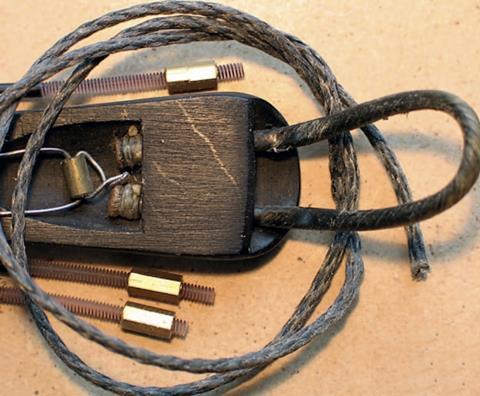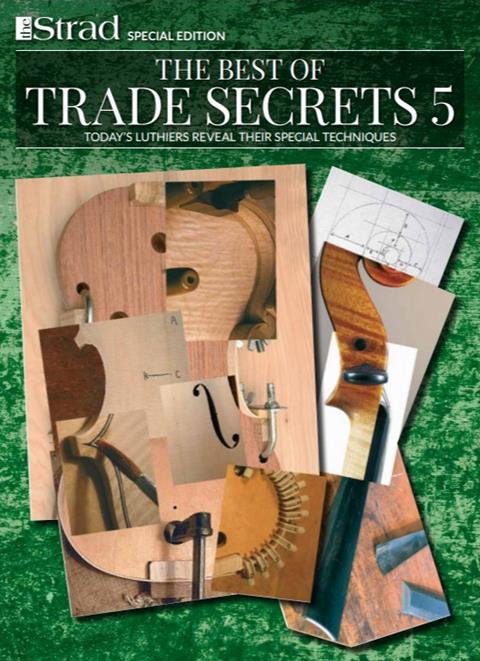John Dilworth reflects on how gut, steel, nylon and now parachute cord have all brought change to the luthier’s craft

Discover more lutherie articles here
This article is from the July 2013 issue of The Strad
I hate to sound like the grey-haired old chump that I am, but tailguts have changed since the old days. The old days when they were gut. Real gut. We used harp strings, I believe. Threaded them through the tailpiece, made a guesstimate of the correct length, bound the cut ends with gut violin E strings, and sealed the knots with rosin dust and the flame of a little glass burner. The traditional, trusted method, still standard practice for Baroque set-ups. But still, a lot of them went bang very loudly at inconvenient times. Slipping knots; dried out and perished gut; lengthening and shortening the gut to get the correct resonance in the string tails – what a pain.
At the same time, we had the little nylon Sacconi tails, with threaded brass tags. These were temptingly simple to use, but also notorious for going bang very loudly at inconvenient times. The nylon stretched, the threads stripped, and I at least was sniffy about them. Or you could use the old wire tail-loop. Literally that – a strong length of steel wire, cut to length and locked together around a little brass cylinder under the tailpiece. Strong, reliable, stable, but there was a tendency for the thin wire to rattle in the tailpiece’s holes. And I for one looked very sniffily at any use of common or garden steel on my finely crafted and delicate wooden creations.
The nylon cords improved and ultimately took over. Better-engineered versions appeared perfectly reliable. They were easy to adjust – that crucial few inches, a sixth of the played string length, makes a big difference to how an instrument performs, and with these stronger nylon loops the adjustment is just the tightening or loosening of the little brass nuts that hold the loop in place.

But now we have the amazing parachute cord. Our problems would seem to be over, and both instruments and makers benefit. Since using this exceedingly modern compound material, stronger than steel, softer than silk, I am converted. It is, as it says on the packet, completely stable, completely flexible, and it stays knotted. With this stuff, I’ve had tailpieces snap, but not the gut itself fail. There also seems to be a slight tonal benefit. Whether this is because of its unique resilience, or the fact that it’s not hard or ‘twangy’ like steel, nor soft and absorbent of vibration like gut, I have no idea. But I like it. I’m sure Stradivari would have done too, if he’d been familiar with the works of Leonardo da Vinci and known of parachutes, and, um, synthetic multi-fibre cord. The only thing I don’t like is having to cut it. It’s stronger than my best wire snippers.
Read: Ask the Experts: choosing a new violin tailpiece
Read: Can these new tailpiece designs raise the tonal game of your instrument?
Discover more lutherie articles here
This article is from the July 2013 issue of The Strad
An exclusive range of instrument making posters, books, calendars and information products published by and directly for sale from The Strad.
The Strad’s exclusive instrument posters, most with actual-size photos depicting every nuance of the instrument. Our posters are used by luthiers across the world as models for their own instruments, thanks to the detailed outlines and measurements on the back.
The number one source for a range of books covering making and stinged instruments with commentaries from today’s top instrument experts.
This year’s calendar celebrates the top instruments played by members of the Australian Chamber Orchestra, Melbourne Symphony, Australian String Quartet and some of the country’s greatest soloists.













































No comments yet